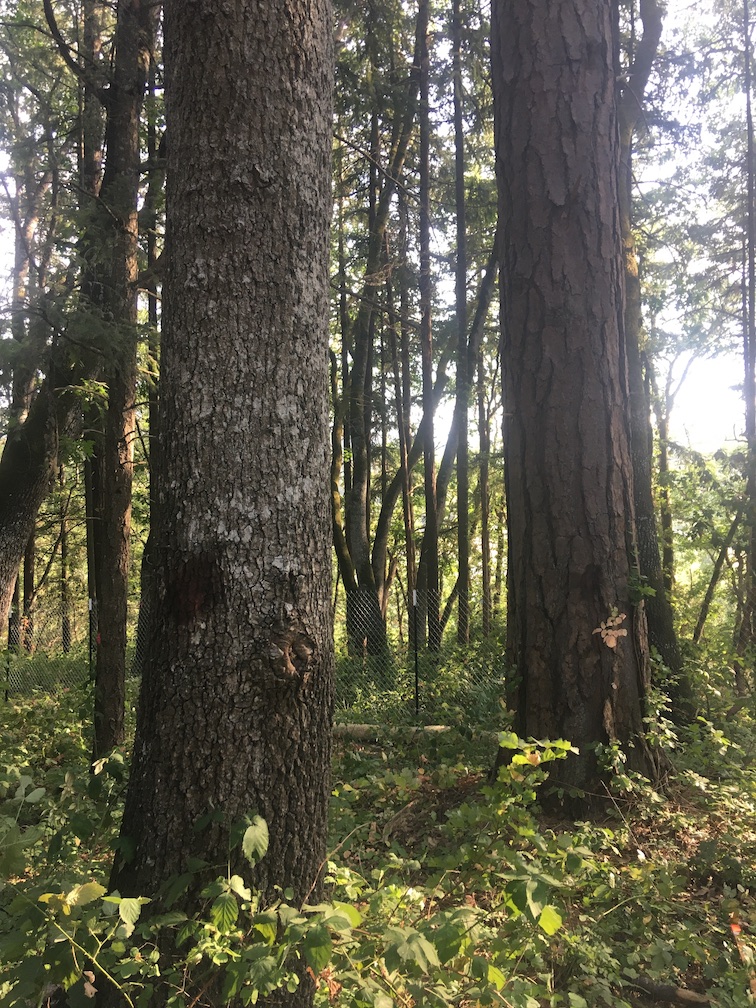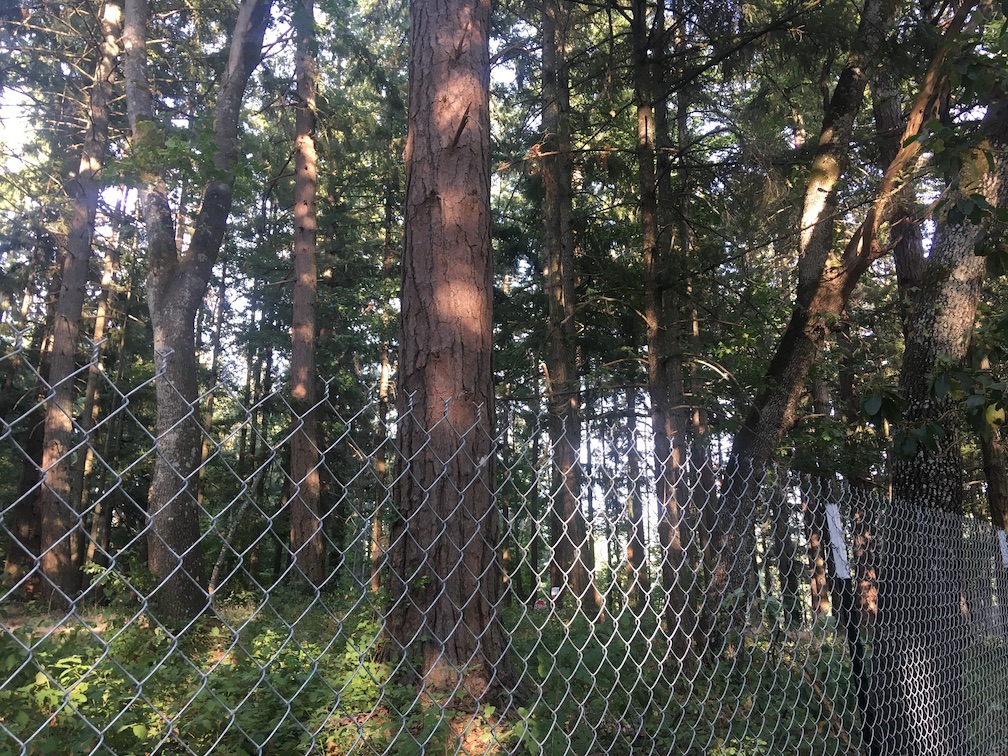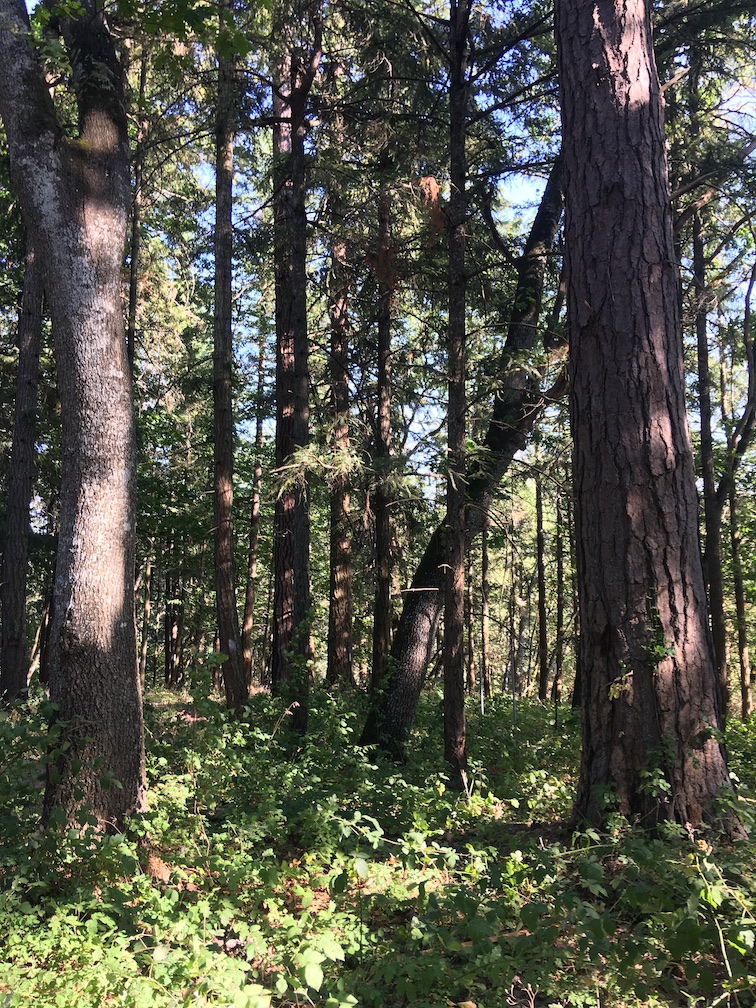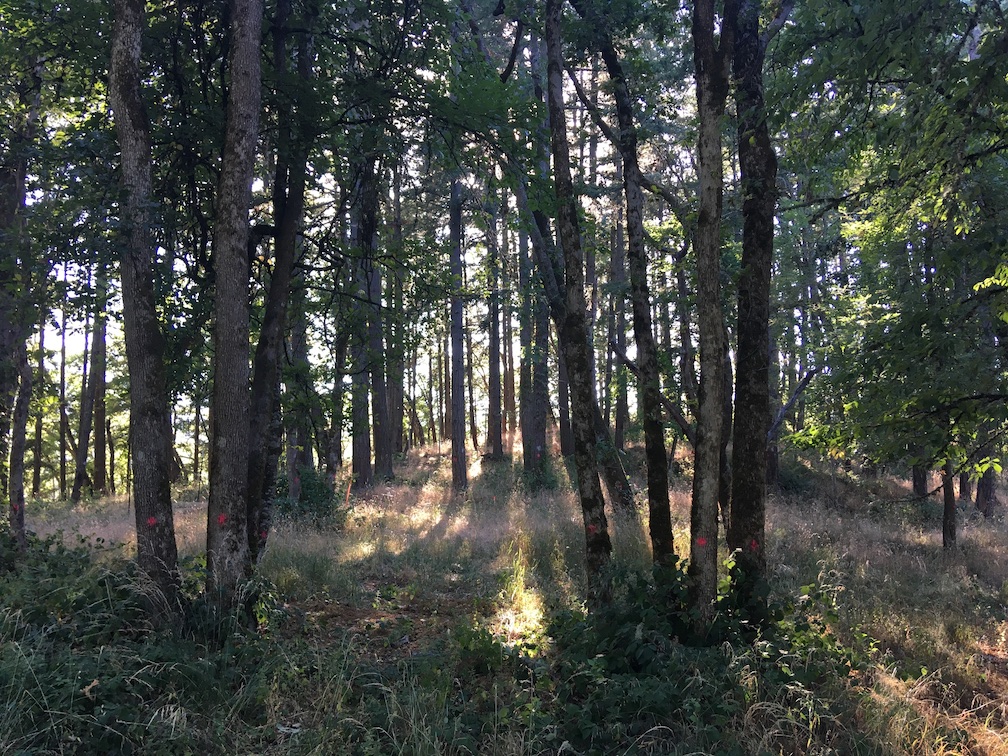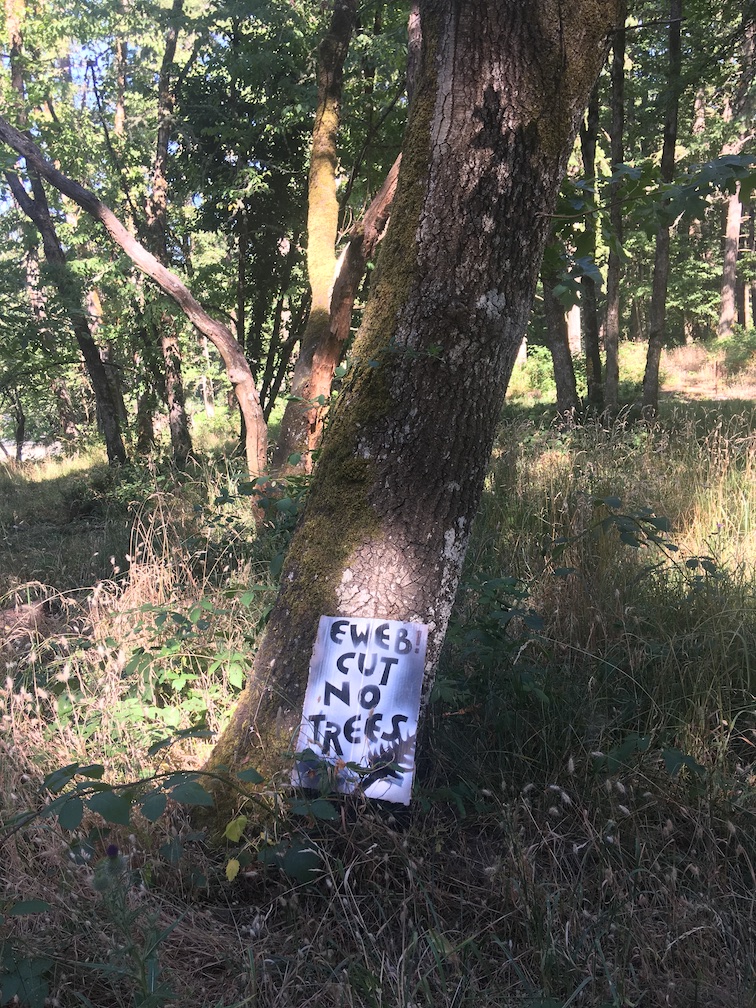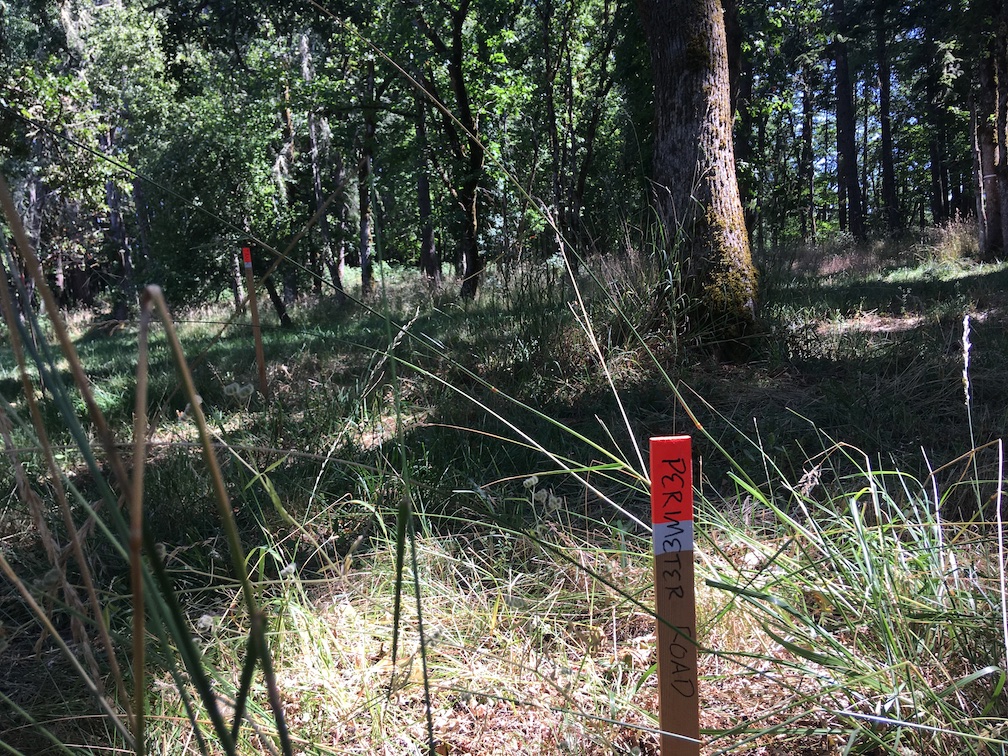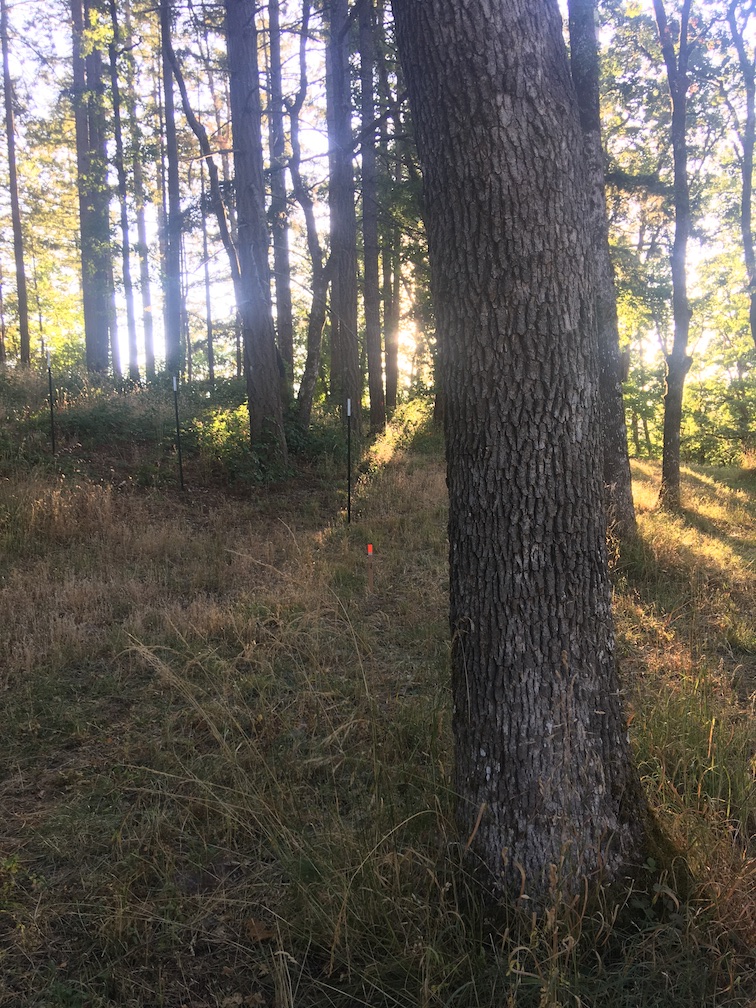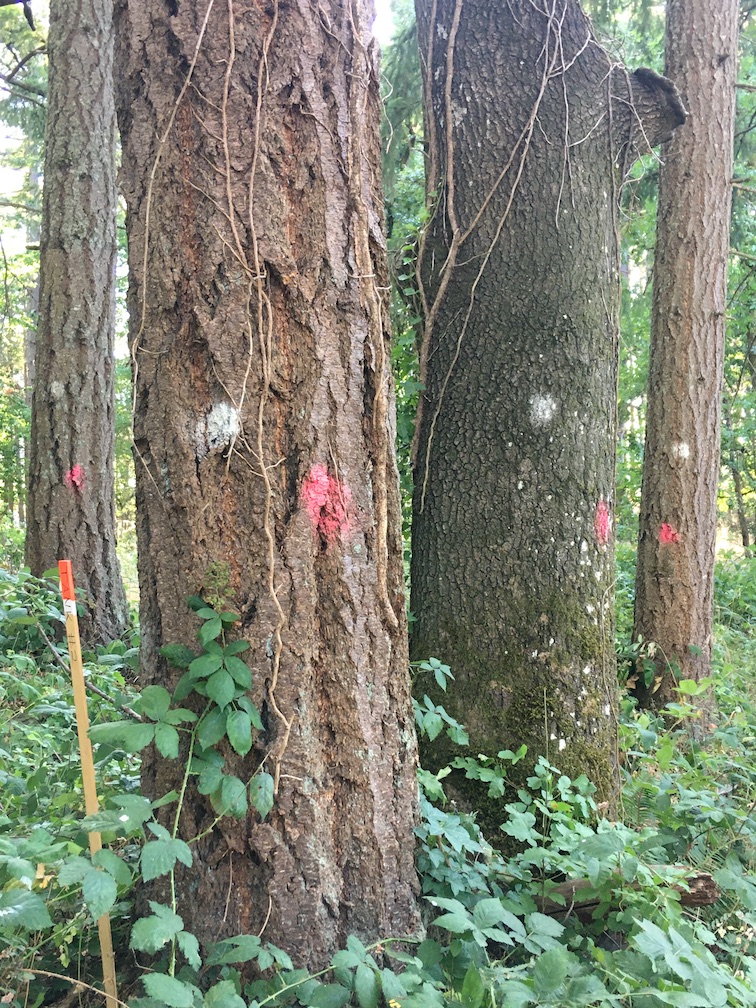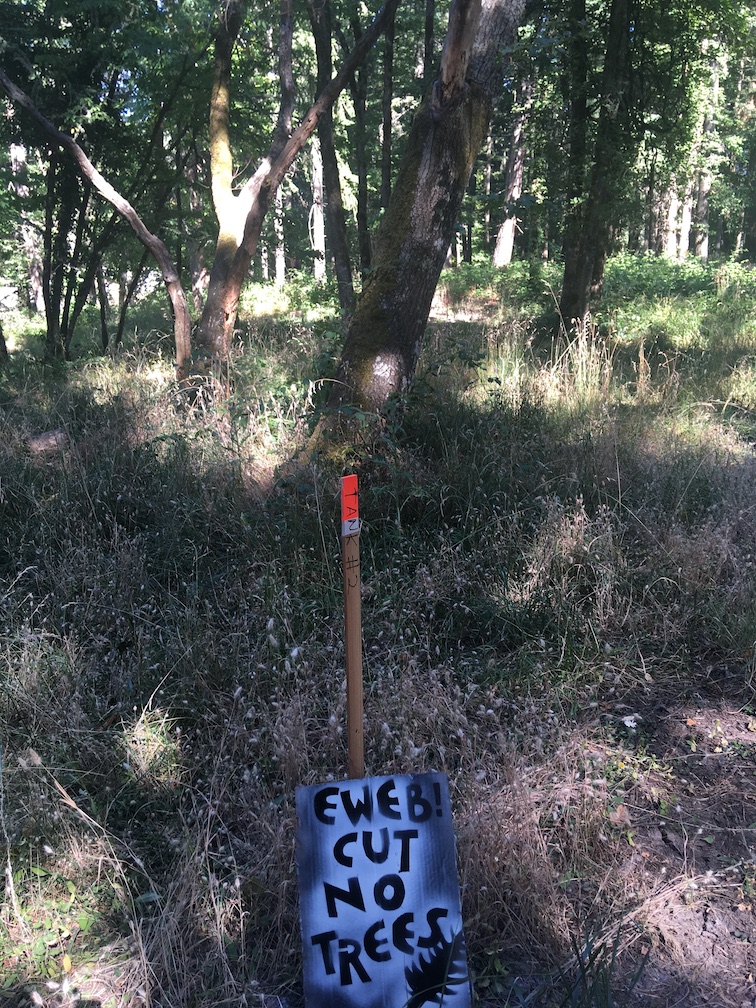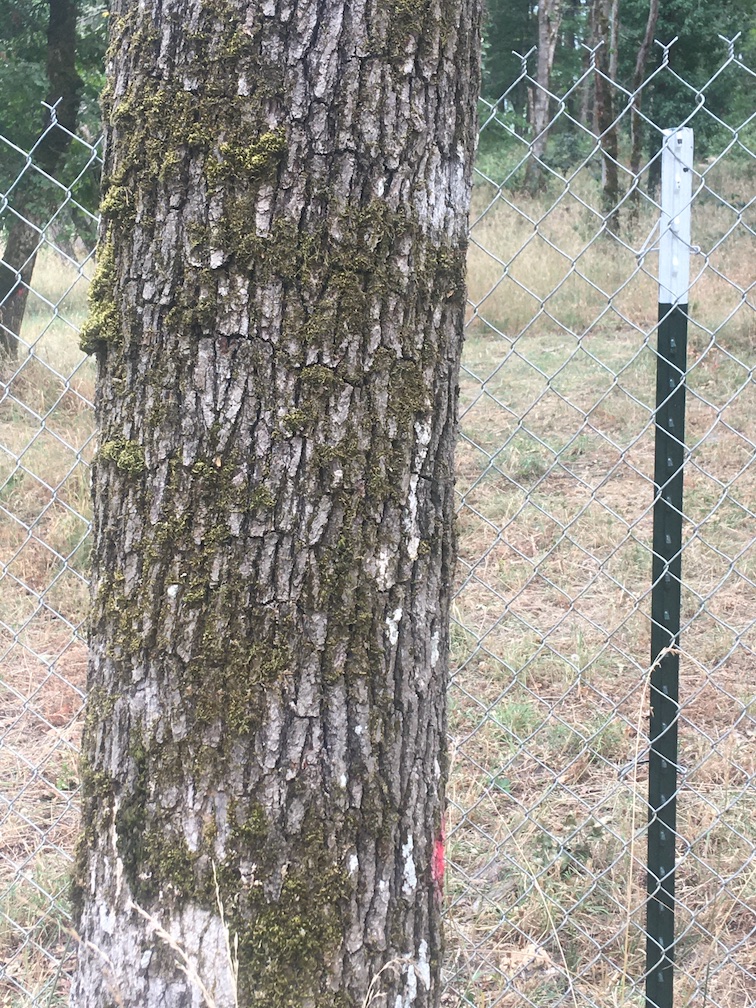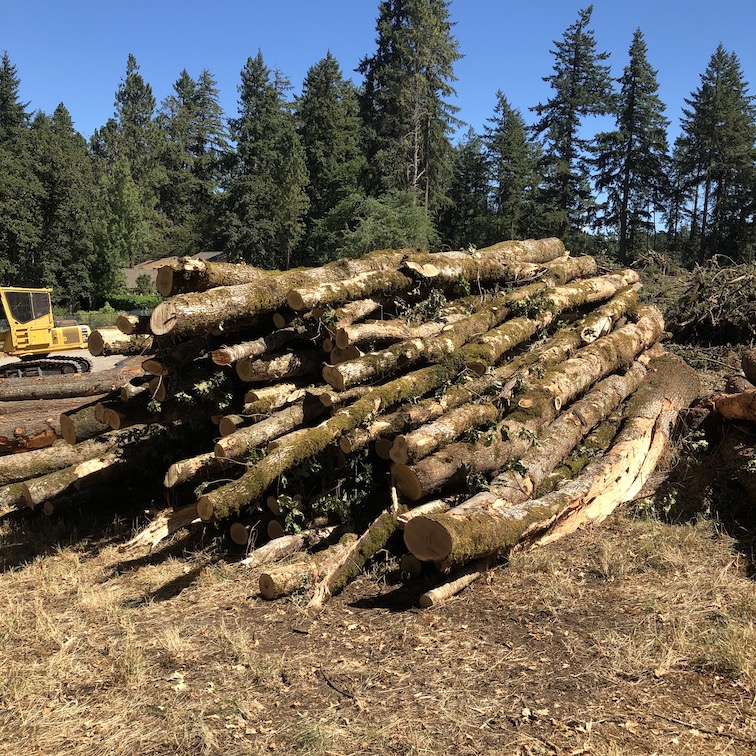
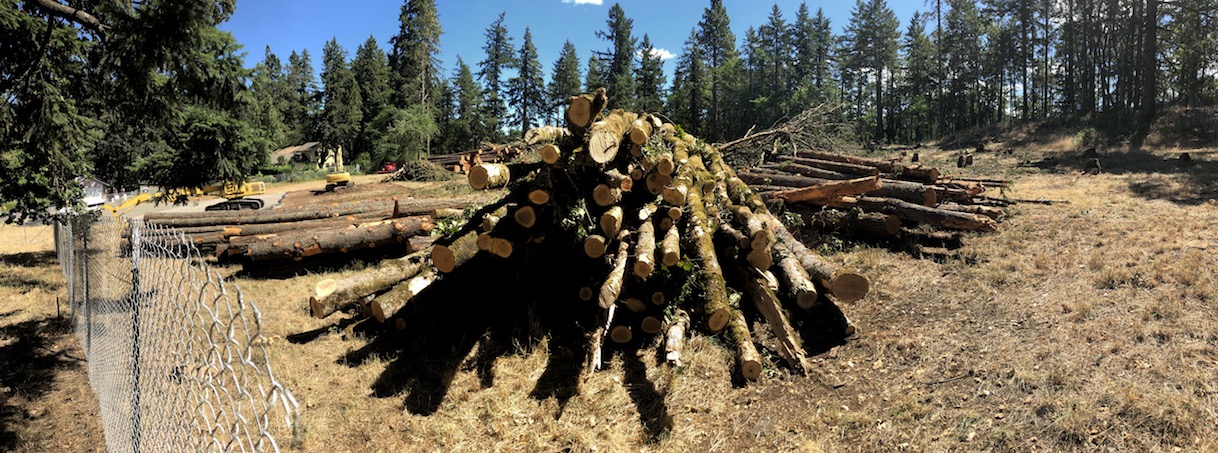
www.EWEB.wtf - EWEB completed their clearcut in August, cutting the largest Doug firs (including the 15 foot circumference champion tree) and Ponderosa pines. The largest Black Oaks were cut on August 2 when EWEB clearcut most of this public forest, rushing to destroy just as the state Land Use Board of Appeals (LUBA) issued a temporary stay of execution based on a challenge brought by former EWEB commissioner Sandra Bishop. LUBA lifted the stay on August 17, cutting resumed on the 18th and the champion big doug fir was cut down on the 19th.
Eugene environmental groups stayed silent. They did not dare challenge EWEB's mismanagement that let existing tanks degrade to the point they are unrepairable and are silent about real estate overdevelopment, including future expansions of Eugene to Veneta and Junction City which will need lots of water. They also ignore plans for massive widening of Beltline highway (12 - 14 lanes).
In a democracy the public comment period never ends. Silence is consent.
"they are protecting really valuable oak habitat that is exceedingly rare"
- EWEB commissioner Matt McRae
In reality, EWEB is going to cut "valuable oak habitat" including large oaks on the site. Some of the oaks might also be over a century old, as old as the big Douglas fir profiled on the homepage.
Friends of Trees was paid by EWEB to plant about a dozen oak saplings on the south end of the property in the corner of the property that is a field (not forest). Perhaps in the 22nd century those trees, if they survive desertification, will provide shade and habitat.
Oaks with multiple trunks are likely "stump sprouts" from the original old growth trees. Oak roots can survive cutting of the trunks and resprout. But they cannot survive being bulldozed.
Oregon White Oak and California Black Oak are the two native oak species in Eugene. Most of the oaks at EWEB forest were Black Oaks, which are much rarer than White Oaks because Eugene is the northern edge of their range. Perhaps climate change will shift their range further north, but for evolution to enable that migration the intact habitats at the current edge of their range would have to be protected.


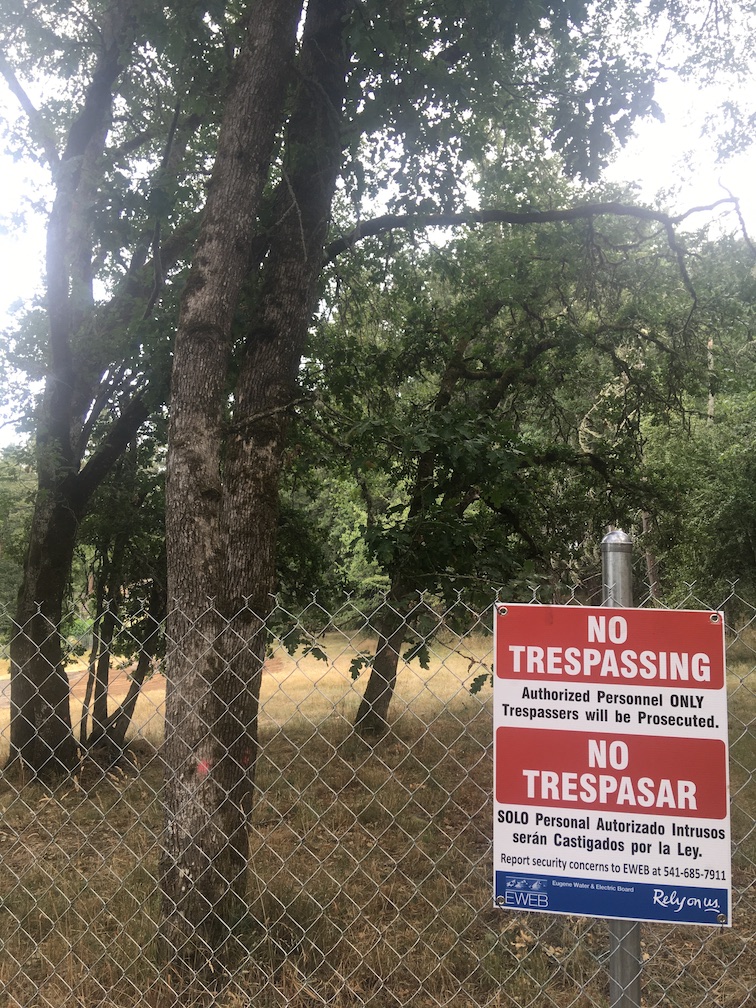
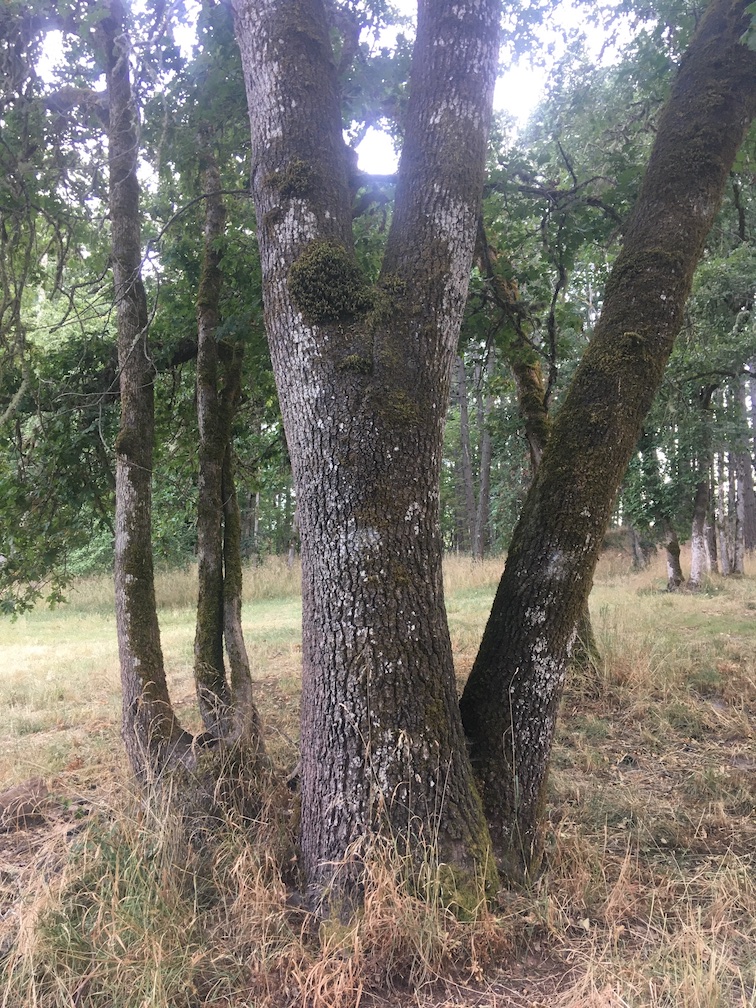
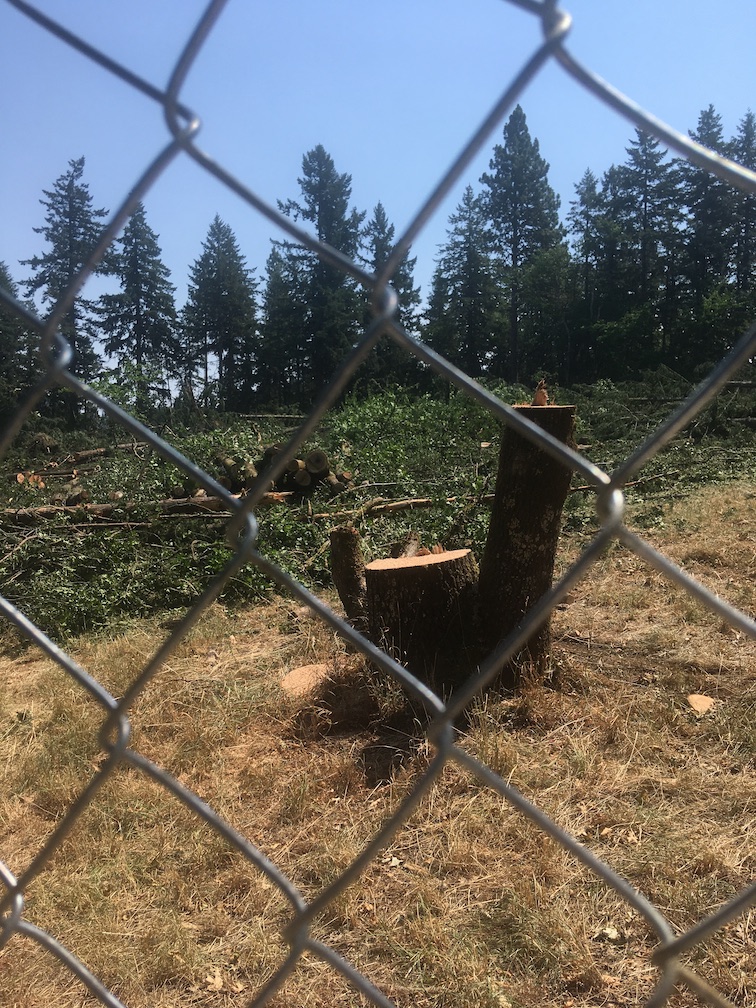
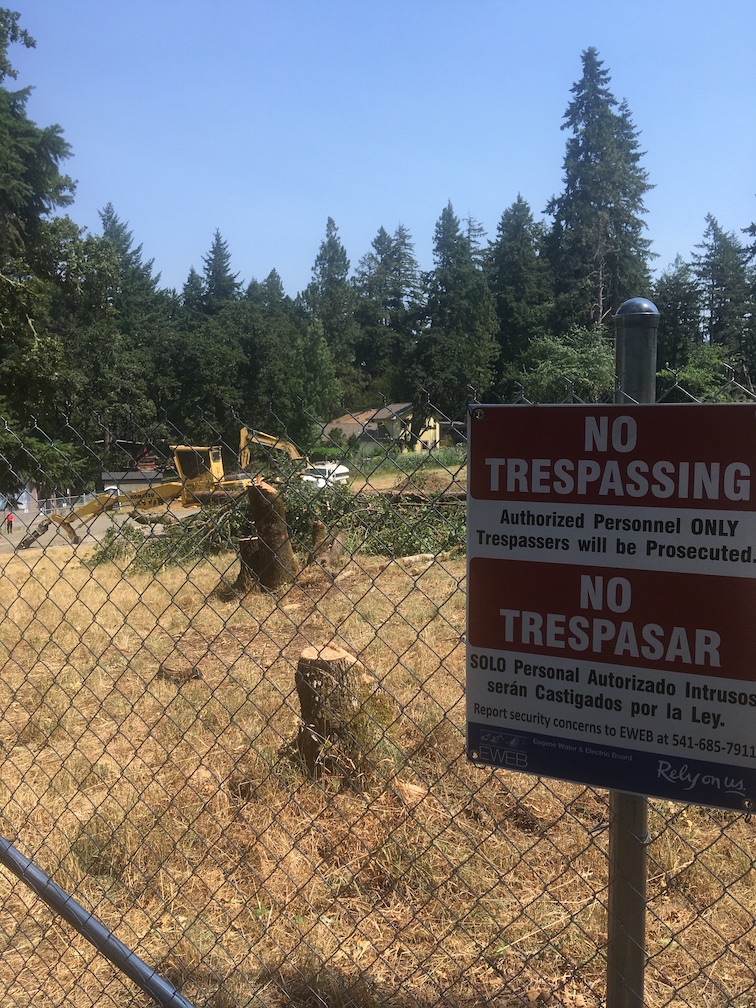
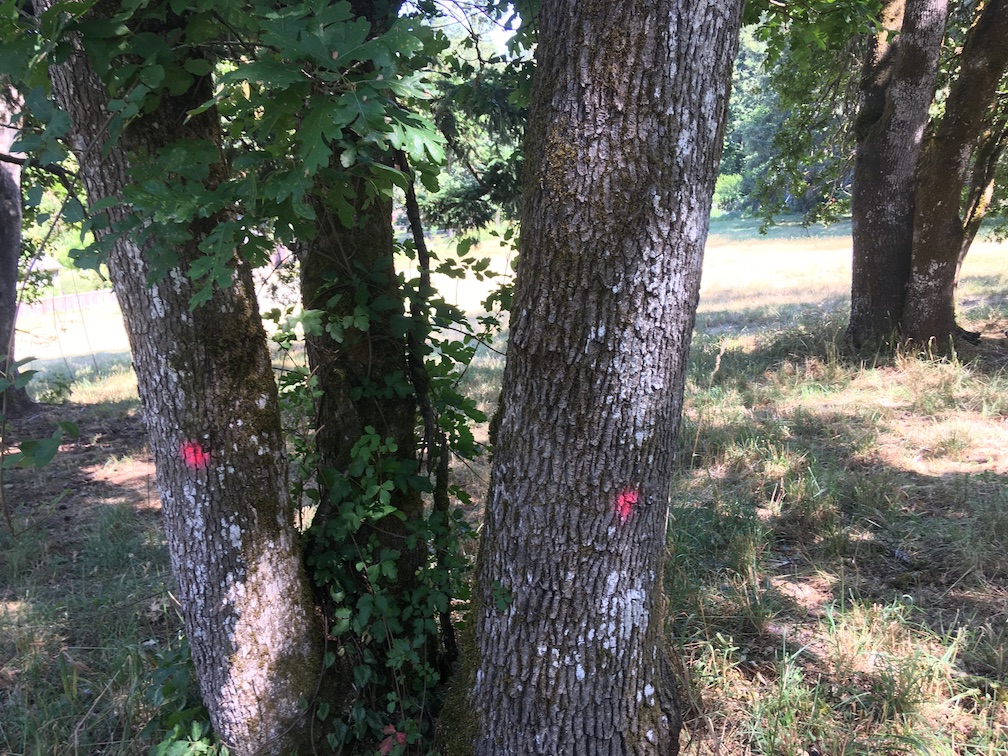
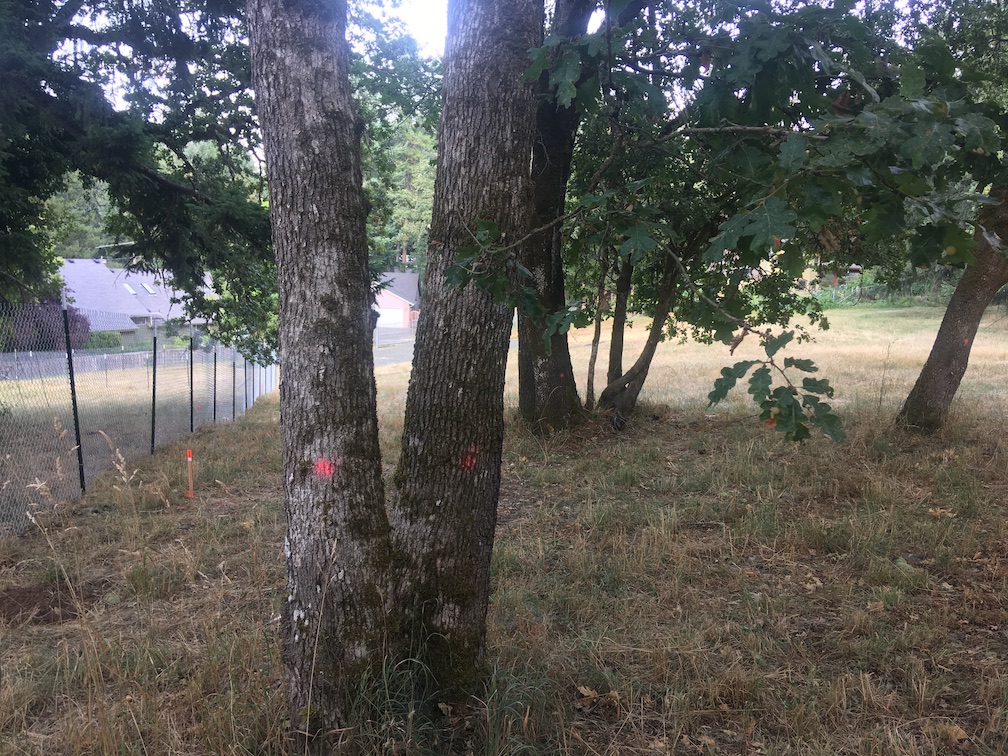
poison oak turning red (early, due to drought) and red spray paint indicating the death sentence
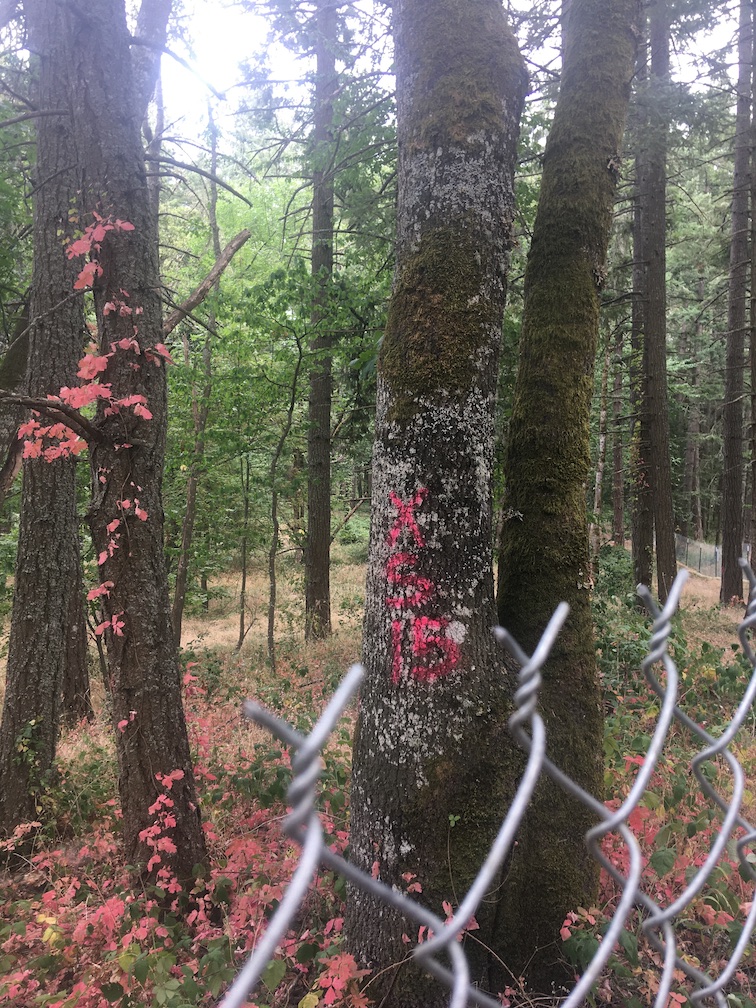
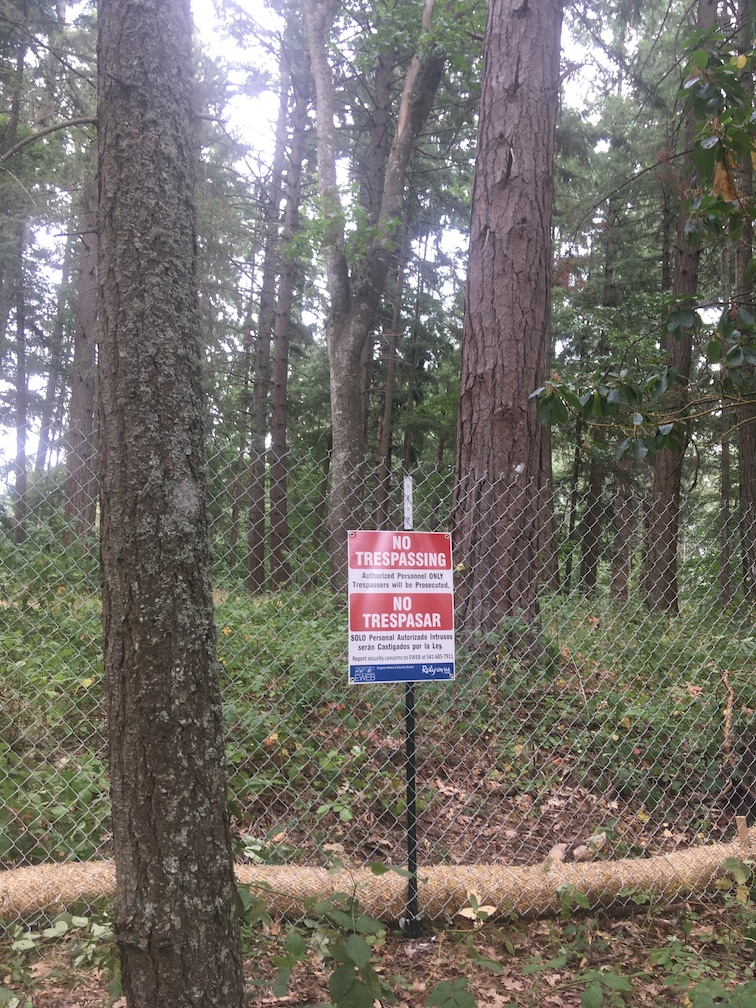
Black oak and Willamette Valley Ponderosa pine
